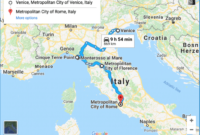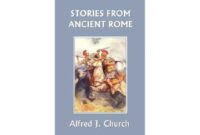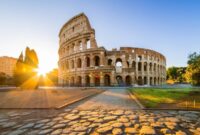Colosseum rome – Journey through the iconic Colosseum of Rome, an architectural marvel that stands as a testament to the grandeur and brutality of the Roman Empire. This colossal amphitheater, with its awe-inspiring design and blood-soaked history, offers a glimpse into the heart of ancient Roman society, where gladiators fought for glory and emperors reveled in the spectacle.
Prepare to be captivated as we explore the Colosseum’s origins, its architectural wonders, the thrilling gladiatorial contests and animal shows that unfolded within its walls, and the cultural and historical significance that has made it an enduring symbol of Roman power and entertainment.
Historical Overview
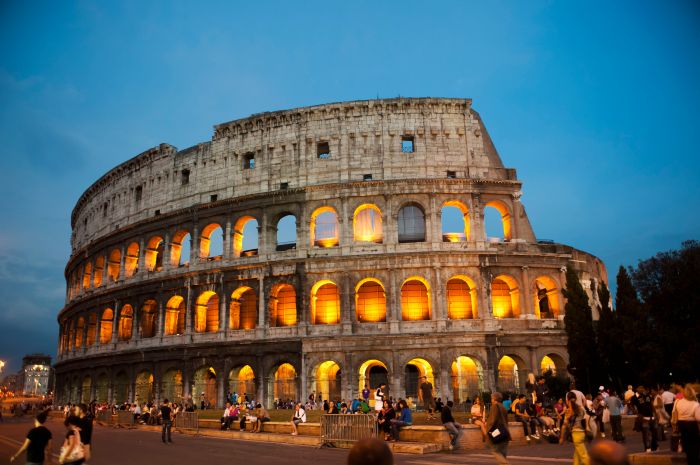
The Colosseum, an iconic amphitheater in Rome, Italy, stands as a testament to the grandeur and entertainment culture of the Roman Empire. Its origins can be traced back to 70 AD, when Emperor Vespasian of the Flavian dynasty initiated its construction.
The Colosseum, known as the Amphitheatrum Flavium, was completed in 80 AD under Emperor Titus and further dedicated by Emperor Domitian.
The Colosseum’s primary function was to host gladiatorial contests, public spectacles, and other forms of entertainment. Gladiators, often slaves or prisoners of war, engaged in fierce combat against each other or wild animals. The Colosseum also witnessed chariot races, mock naval battles, and elaborate theatrical performances.
Architectural Marvel
The Colosseum is an architectural marvel, renowned for its size and engineering prowess. Its elliptical shape measures approximately 188 meters (617 feet) in length and 156 meters (512 feet) in width, with a height of 48 meters (157 feet). The amphitheater’s massive structure is made of travertine limestone and tuff, held together by iron clamps.
It could accommodate an estimated 50,000 to 80,000 spectators.
The Colosseum’s seating arrangement was meticulously designed to ensure clear views of the arena for all spectators. The seating was divided into four tiers, each with its designated purpose. The lower tiers were reserved for senators, magistrates, and other elite members of Roman society, while the upper tiers were occupied by ordinary citizens.
Social and Cultural Significance
The Colosseum played a significant role in Roman society. It was a place of entertainment, but also a reflection of the empire’s power and prestige. The gladiatorial contests and other spectacles provided a means for the Roman populace to release their tensions and indulge in a shared experience.
The Colosseum also had a political dimension. Emperors used the spectacles to gain favor with the people and reinforce their authority. Gladiatorial contests were often staged to commemorate important events or victories, and the Colosseum became a symbol of Roman strength and invincibility.
Architectural Features
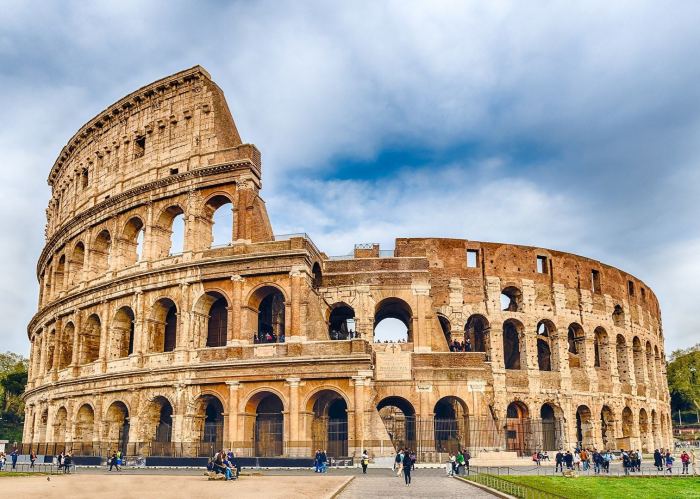
The Colosseum, an architectural marvel of the Roman Empire, showcased innovative design and engineering that shaped its iconic form and functionality. Its elliptical structure, meticulously engineered to maximize spectator capacity and visibility, remains a testament to the architectural brilliance of ancient Rome.
The Colosseum in Rome, Italy, is an iconic amphitheater that has been standing for centuries. It is one of the most popular tourist destinations in the world, and for good reason. The Colosseum is a massive structure that is incredibly well-preserved, and it provides a glimpse into the past.
If you are planning a trip to Rome, be sure to add the Colosseum to your itinerary. And if you are looking for a place to stay near Olympic National Park, click here for some great options. The Colosseum is a must-see for any visitor to Rome, and it is sure to leave a lasting impression.
Seating Capacity and Tiered Levels
The Colosseum’s seating arrangements were meticulously planned to accommodate the vast crowds that flocked to witness the gladiatorial contests and public spectacles. The arena featured a tiered seating system, with each level designated for a specific social class. The lower tiers, known as the podium, were reserved for senators and other high-ranking officials, while the upper tiers, known as the maenianum, were allocated to the general public.
- Podium: Reserved for senators, magistrates, and other dignitaries.
- Maenianum primum: The first tier of the maenianum, allocated to wealthy citizens.
- Maenianum secundum: The second tier, designated for citizens of lower wealth.
- Maenianum summum: The highest tier, open to the general public.
System of Tunnels and Chambers Beneath the Arena
Beneath the arena’s surface lay an intricate network of tunnels and chambers that served various purposes. These underground passages facilitated the movement of gladiators, animals, and stage equipment. Additionally, they provided access to the arena’s drainage system and allowed for the efficient cleaning and maintenance of the vast space.
- Gladiator cells: Small, underground chambers where gladiators waited before their matches.
- Animal pens: Underground enclosures used to house the animals used in the games.
- Machinery rooms: Spaces that housed the machinery used to operate the arena’s stage and special effects.
- Drainage system: A network of tunnels and channels that drained rainwater and other liquids from the arena.
Gladiatorial Contests
Gladiatorial contests were a popular form of entertainment in ancient Rome, held in the Colosseum to satisfy the bloodlust of the Roman populace. These contests featured fierce battles between trained gladiators, who fought for their freedom, glory, or simply to survive.The
types of gladiatorial contests varied, with each having its own unique set of rules and customs. One common type was the “munus,” where two gladiators fought each other until one was killed or surrendered. Another type was the “venatio,” which involved gladiators fighting against wild animals such as lions, tigers, or bears.Gladiators
were classified into different types based on their weapons and fighting styles. Some of the most common types included:
-*Secutor
Equipped with a sword and shield, the secutor pursued the retiarius, a lightly armed gladiator with a net and trident.
-*Retiarius
Armed with a net and trident, the retiarius tried to trap the secutor in his net and then stab him with his trident.
-*Thraex
Wielding a short sword and a small, round shield, the Thraex was known for his aggressive fighting style.
-*Murmillo
Similar to the Thraex, the murmillo was equipped with a sword and a large, rectangular shield.
Gladiatorial combat was governed by strict rules and customs. The contests were overseen by a referee, who ensured that the rules were followed and that the gladiators were treated fairly. The gladiators themselves were often slaves or prisoners of war, who had little choice but to fight in the arena.
However, some gladiators were free men who chose to fight for glory or financial gain.The outcome of a gladiatorial contest was often decided by the crowd, who could vote for the victor or grant mercy to the defeated gladiator. The winning gladiator was typically rewarded with freedom or a monetary prize, while the loser was often killed.Gladiatorial
contests were a brutal and often deadly form of entertainment, but they also provided a glimpse into the values and beliefs of ancient Roman society. These contests showcased the Roman fascination with violence and spectacle, and they played a significant role in shaping the culture and history of the Roman Empire.
Animal Shows: Colosseum Rome
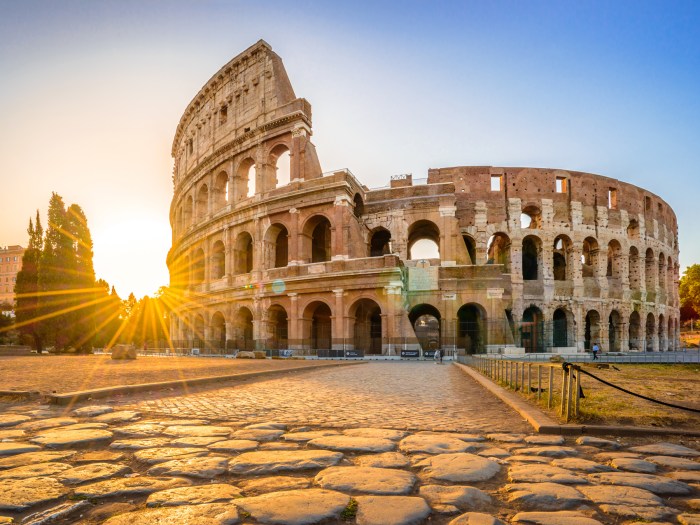
Alongside gladiatorial contests, the Colosseum was also renowned for its extravagant animal shows, known as venationes. These spectacles were designed to showcase the empire’s dominance over the natural world and provided a thrilling entertainment for the Roman populace.
The animals featured in these shows were primarily exotic species acquired from across the vast Roman Empire. Lions, tigers, elephants, bears, and hippos were just a few of the many creatures that graced the Colosseum’s arena.
Animal Acquisition
Obtaining these animals required extensive expeditions and diplomatic negotiations. Rome’s far-reaching network of provinces and alliances allowed it to access a wide range of exotic species. Animal traders, hunters, and even foreign rulers contributed to the acquisition of these creatures.
Training and Control
Training the animals for the shows was a complex and dangerous task. Specialized animal handlers, known as bestiarii, employed various techniques to tame and control these wild beasts. They used a combination of positive reinforcement, punishment, and specialized equipment to shape the animals’ behavior.
While in Rome, a visit to the iconic Colosseum is a must. But if you’re planning a trip to Dallas, finding the right accommodation is crucial. For insider tips on the best places to stay, check out our comprehensive guide on where to stay in Dallas . After exploring the vibrant city of Dallas, return to the grandeur of Rome and marvel at the Colosseum’s architectural brilliance.
Public Spectacles
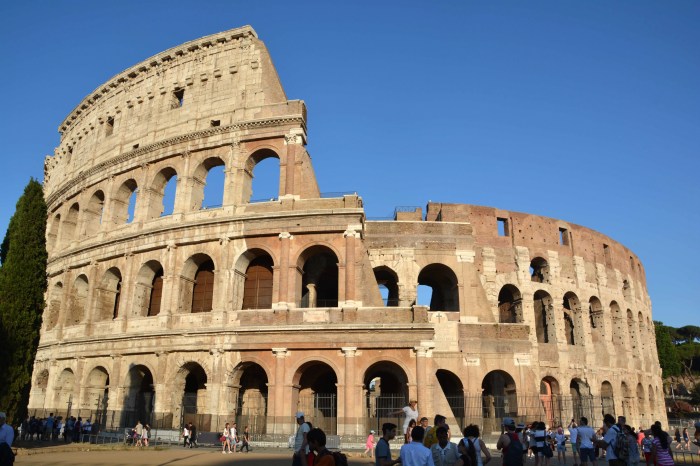
Beyond gladiatorial contests and animal shows, the Colosseum hosted a wide array of public spectacles that held profound religious and cultural significance.
These events served as a means of entertainment, propaganda, and social cohesion, fostering a sense of unity and shared identity among Roman citizens.
Religious Ceremonies, Colosseum rome
The Colosseum was a venue for religious ceremonies and festivals honoring Roman gods and goddesses.
- The Ludi Megalenses, held in honor of Cybele, featured gladiatorial contests and chariot races.
- The Ludi Romani, dedicated to Jupiter, included animal sacrifices, chariot races, and theatrical performances.
Cultural Performances
The Colosseum hosted cultural performances that showcased the artistic talents of Roman citizens.
- Mimes, acrobats, and jugglers entertained the crowds with their skills and humor.
- Poets and musicians recited their works, celebrating Roman history and culture.
Role of the Emperor and Citizens
The emperor played a central role in organizing and financing these spectacles, using them to display his power and gain popularity with the citizens.
Roman citizens eagerly participated in these events, viewing them as a source of pride and entertainment. Their enthusiasm and loyalty contributed to the success and longevity of the Colosseum as a symbol of Roman culture.
Cultural and Historical Significance
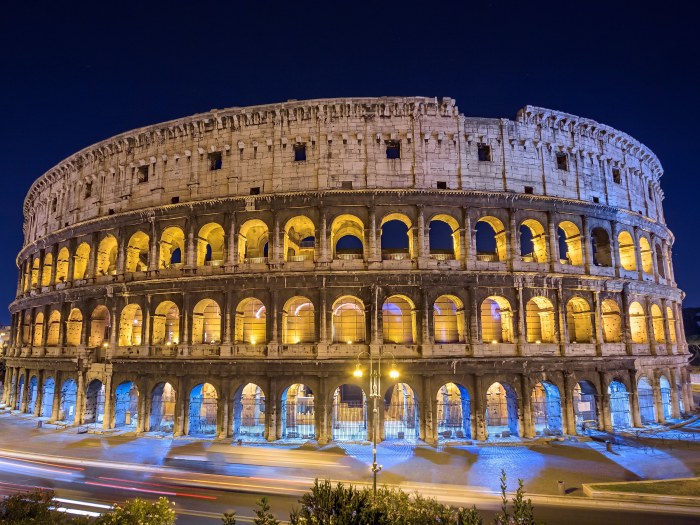
The Colosseum stands as an enduring testament to the power and grandeur of the Roman Empire. Its imposing structure has captivated the imaginations of people for centuries, inspiring countless works of art, literature, and architecture.
As a symbol of Roman ingenuity and engineering prowess, the Colosseum has become an iconic landmark. Its unique design and massive scale have made it one of the most recognizable structures in the world.
UNESCO World Heritage Site
In recognition of its exceptional cultural and historical significance, the Colosseum was designated a UNESCO World Heritage Site in 1980. This designation highlights the importance of preserving and protecting this architectural marvel for future generations.
Ultimate Conclusion
As we conclude our exploration of the Colosseum, its legacy continues to resonate today. It remains a symbol of architectural prowess, a reminder of the violent spectacles that shaped Roman society, and a testament to the enduring power of history.
Whether you marvel at its colossal structure or ponder its bloody past, the Colosseum stands as a captivating monument that invites us to delve into the complexities of ancient Rome.
